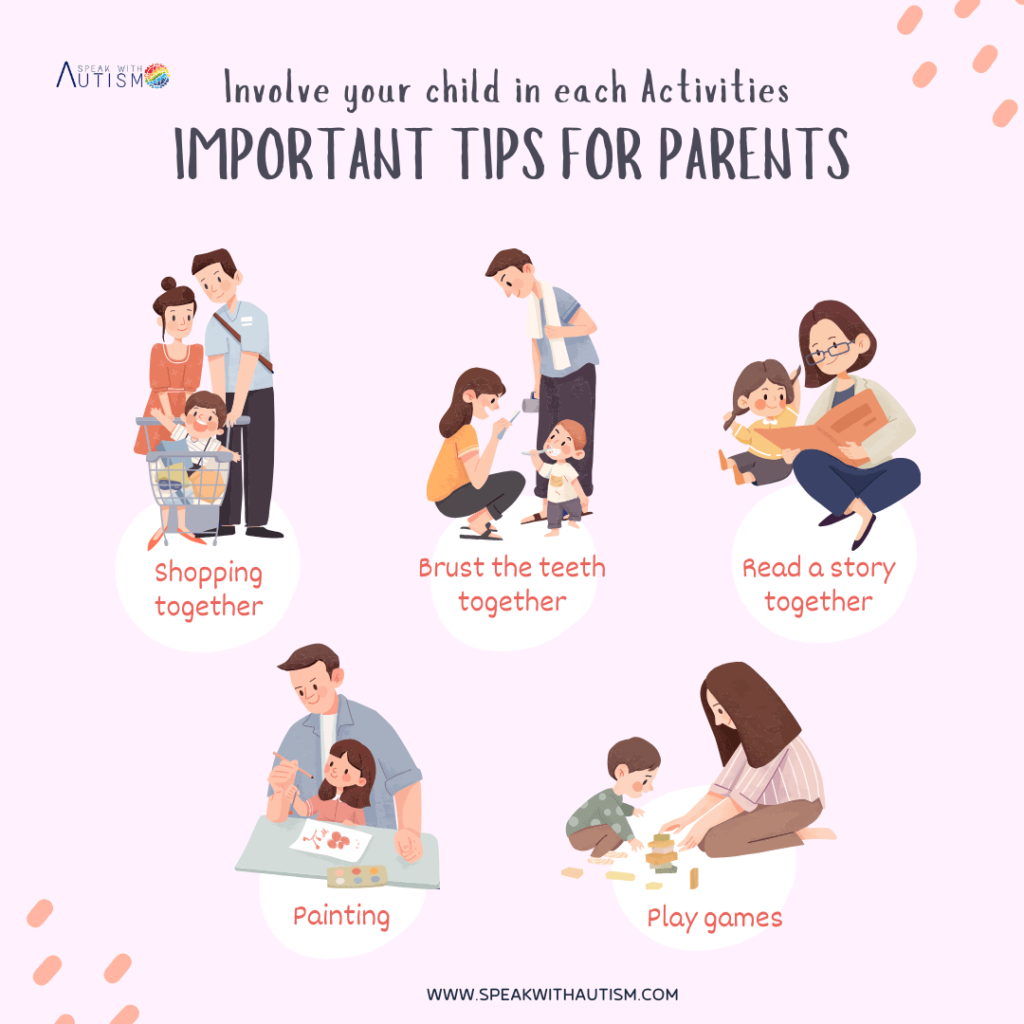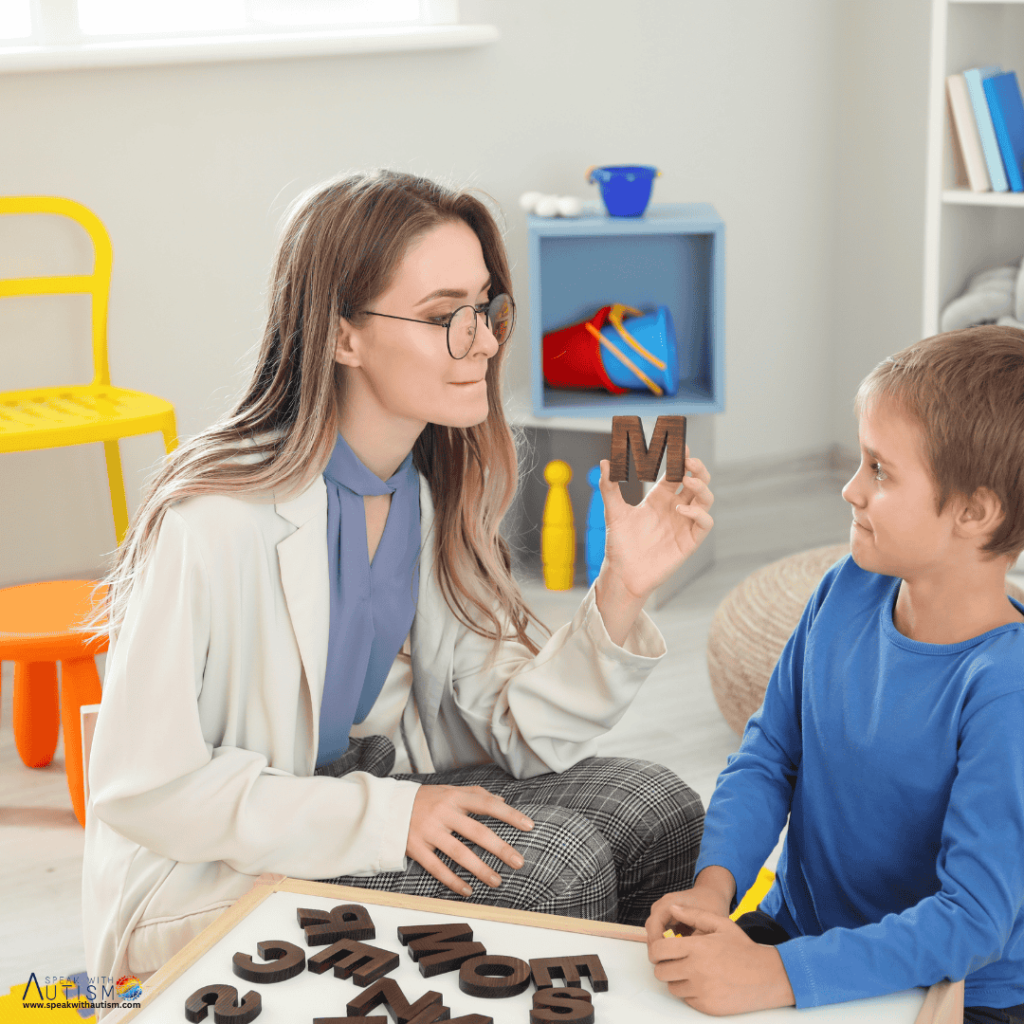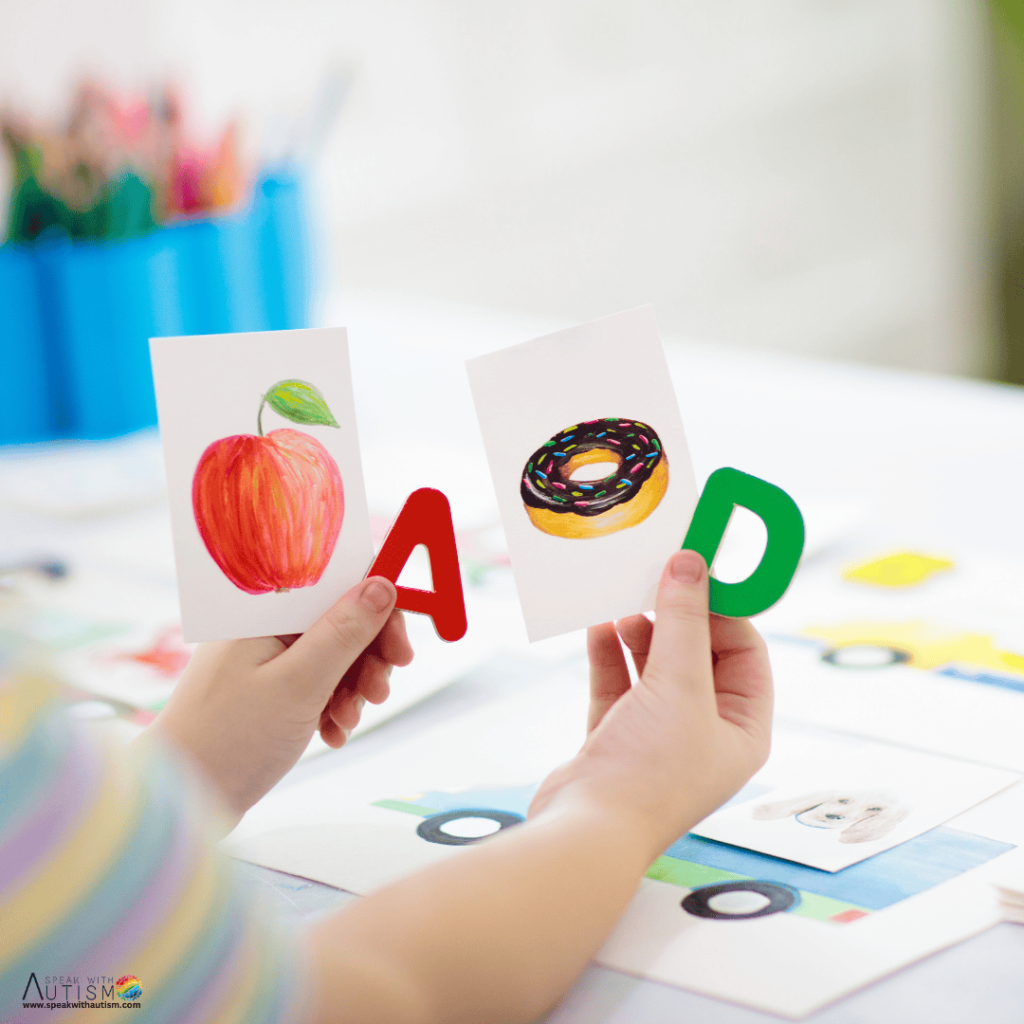Teach Object Recognition & Following Instructions- Understanding difficulties are common in autistic children because following verbal instructions can be challenging for them. They need to be taught in a clear and structured way.
Table of Contents
How to Teach Object Recognition & Following Instructions to an Autistic Child
1. Start with Real Objects
Use real objects before introducing pictures. Show the object, say its name, and allow the child to touch and explore it. Example: “This is an apple. Look, touch, and listen – Apple!”
First, you need to teach your child how to differentiate an apple from other objects.
✅ Activity
Place 3-4 objects on a table – an apple, banana, ball, and spoon.
- Encourage your child by saying, “Give me the apple.”
- If they pick up the wrong object, gently hold their hand, place it on the apple, and say, “This is an apple.”
- When they pick the correct object, appreciate them with claps, a high-five, or a hug.
- Repeat this activity until they can identify the apple correctly.
2. Use Hand-over-Hand Guidance

If your child is not focusing on the object, gently hold their hand and help them touch it. Gradually, they will try on their own.
If you give direct verbal instructions, they might get confused, so physical guidance is necessary at first.
✅ How to do it?
For example, if you want your child to bring an apple from the fridge:
- Hold their hand and guide them to the fridge.
- Open the fridge and gently move their hand toward the apple.
- Once they pick up the apple, say, “Good job! Apple!”
- Gradually reduce physical support—first by holding their hand, then by pointing, and later only using visual cues.
3. Pair with Sounds & Actions
Associate each object with a sound or action. For example, while saying “Ball,” bounce the ball. This helps create a sensory connection and improves recognition of sounds and object names.
4. Flashcards & Picture Matching
After real objects, introduce flashcards or picture books. Start by playing a matching game between real objects and their pictures. Example: “Where is the apple? Match it!”


Autistic children often understand visuals better than verbal instructions. Using a picture schedule or real images can be helpful.
✅ How to do it?
- Print a real photo of an apple.
- When instructing them to bring an apple, show the photo to help them understand what they need to find.
- If they bring the wrong object, show the photo again and point to the correct one.
5. Use Simple & Clear Instructions
Give short and clear instructions, one step at a time. Example:
“Pick up the ball.” (Pause and wait)
“Give it to me.” (Use a hand gesture)
6. Turn Instructions into Fun Games
Play-based learning is the most effective approach. Engage in games like “Simon Says” or “Find the Object.” Example: “Quickly find the teddy and give it to me!”
7. Use Visual Schedules
Use step-by-step images or symbols to display daily instructions. Example:
“First, wear your shoes, then go outside.”
“Bring the water bottle before drinking water.”
8. Praise & Reward
Whenever your child correctly recognizes an object or follows an instruction, immediately praise them. Example: “Wow! You found the apple!”
These activities can also be adapted for teaching word recognition. Keep motivating your child with encouraging words like “Good job!” “Wow!” or “Very good!”
9. Practice in Daily Routine
Incorporate object recognition and instructions into everyday tasks. For example:
- Teach colors while dressing.
- Ask your child to help serve snacks.
- Encourage them to bring their T-shirt, socks, or pants based on verbal instructions.
10. Be Patient & Keep Repeating
Autistic children learn best through repetition. Keep activities short, fun, and stress-free.
Many parents get frustrated and say things like, “How many times do I have to tell you?” Try to avoid such phrases and remain calm.
Celebrate even small achievements, and your child’s learning will improve over time!
✔ First of all learn the difference between apples and other objects (sorting game)
✔ Use picture support or real image
✔ Give a physical prompt
✔ Gently correct to get rid of the habit of picking extra objects
✔ If he is nonverbal, use PECS or sign language
Frequently Asked Questions (FAQs): Object Recognition & Following Instructions
How can I help my child differentiate between objects?
✅ Place 3-4 objects on a table (e.g., apple, banana, ball, spoon).
✅ Say, “Give me the apple.”
✅ If they pick the wrong object, gently guide their hand to the apple and say, “This is an apple.”
✅ Appreciate them when they pick the correct object (claps, high-five, or hug).
✅ Repeat until they identify it correctly.
How does hand-over-hand guidance help?
If your child is not focusing, gently hold their hand to help them touch and explore the object. Gradually, they will try on their own.
What is an example of using hand-over-hand guidance?
If you want your child to bring an apple from the fridge:
✅ Hold their hand and guide them to the fridge.
✅ Open the fridge and move their hand toward the apple.
✅ When they pick it up, say, “Good job! Apple!”
✅ Gradually reduce physical support by first pointing, then only using visual cues.
How can sounds and actions improve object recognition?
Pair objects with actions or sounds to create a sensory connection. Example: Say “Ball” while bouncing a ball to help them associate the word with the object.
When should I introduce flashcards and picture matching?
After your child recognizes real objects, use flashcards for matching games. Example: “Where is the apple? Match it!”
How can picture support help in object recognition?
✅ Print a real photo of an apple.
✅ Show the photo when asking your child to bring an apple.
✅ If they bring the wrong object, show the photo again and point to the correct one.
Why should I use simple and clear instructions?
Short and clear instructions help avoid confusion. Example:
✅ “Pick up the ball.” (Pause and wait)
✅ “Give it to me.” (Use a hand gesture)
What is the benefit of using visual schedules?
Step-by-step images help children follow instructions. Example:
✅ “First, wear your shoes, then go outside.”
✅ “Bring the water bottle before drinking water.”
